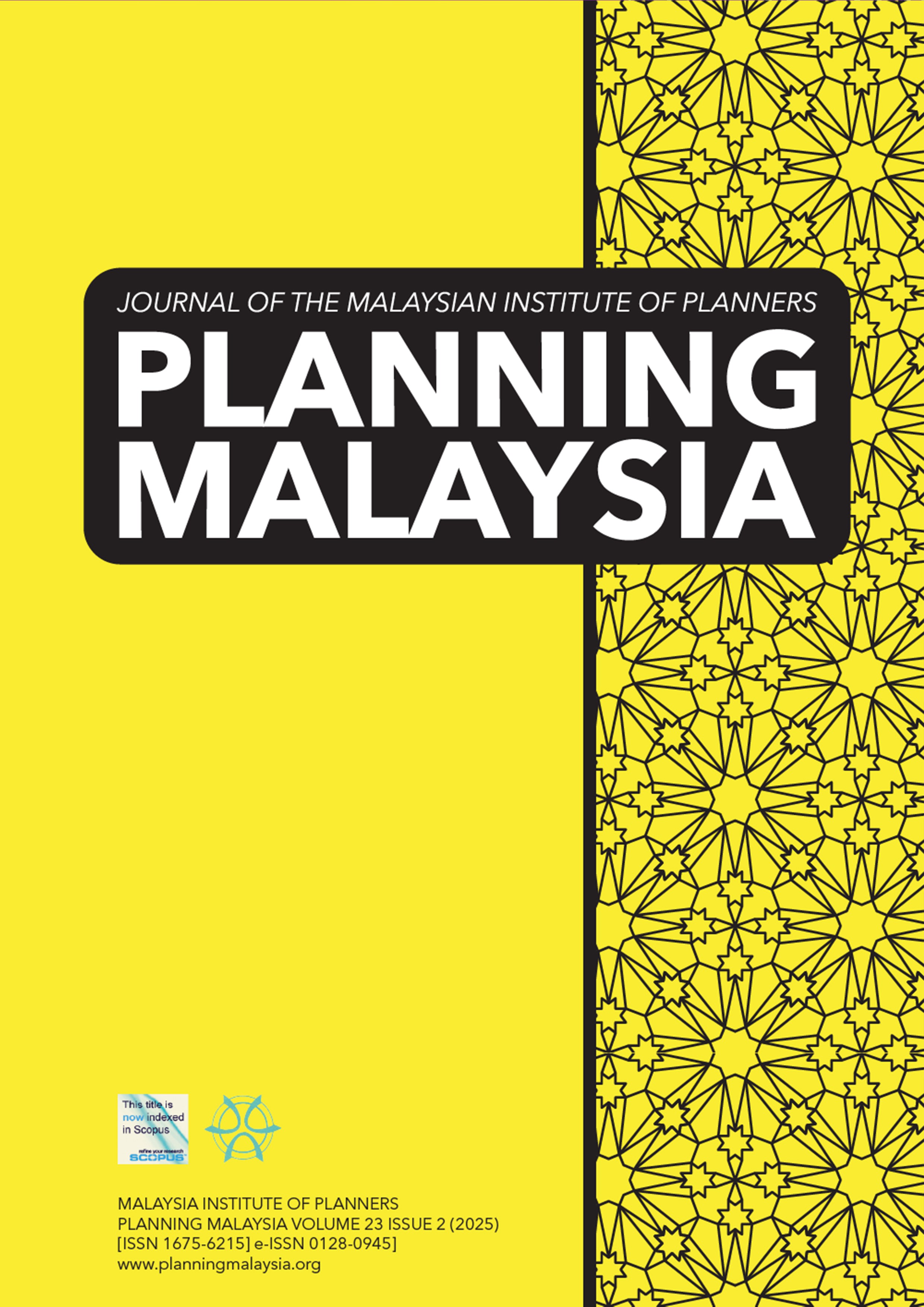URBAN DYNAMICS OF RIVERBANK SETTLEMENT IN SAMARINDA CITY, INDONESIA
DOI:
https://doi.org/10.21837/pm.v23i36.1724Keywords:
Urbanity, Settlement, Riverbank, TransformationAbstract
Economic change and government policy are the major factors that determine the settlement on the riverbank in Samarinda, which were originally determined by roads. The transformation problem arises due to economic development with an increase in land-based transportation modes. Therefore, this research aimed to analyze the urban dynamics of settlement based on the configuration and distribution of building masses on the riverbank. It used the qualitative method to determine the urbanity of settlement and the dynamic relationship between mass and environment that creates the morphological characteristics. The result showed that the riverbank settlement in Samarinda is in form of a dense structure due to the availability of limited land. The orientation of settlement persisted towards the river and land as the basis for daily activities. This research made an important contribution to riverbank settlement planning, especially in Samarinda.
Downloads
References
Ahyat, I. S. (2012). Politics and Economy of Banjarmasin Sultanate in the Period of Expansion of the Netherlands East Indies Government in Indonesia, 1826-1860. International Journal for Historical Studies, pp. 155–176.
Andini, D. (2011). Exploring the Social Life of Public Spaces on Riverfronts: A Case Study of Sudirman and Tendean Quays in Banjarmasin, South Kalimantan, Indonesia. Wageningen: Wageningen University.
Anilaputri, J. N. (2023). Urban Left-Over Space: Characteristic Identification Of The In-Between Spaces In Riverside Settlement (Case Study: Martapura Riverside Settlement At Sasirangan Village). Built Environment Studies, pp. 1–10. DOI: https://doi.org/10.22146/best.v4i1.5920
Geenen, G. &. Daan D (2013). River and Road as Warp and Woof. Interweaving Ecologies and Economies in Banjarmasin’s Delta. Zurich: Park Books.
Ghasemi, M. M., Lamit, H & Shafaghart, A (2014). The association between riverscape and place attachment in historical cities in Malaysia. Jurnal Teknologi, 70(7), 147–154. DOI: https://doi.org/10.11113/jt.v70.3603
Leedy, P. D., & Omrod, J.E (2019). Practical Research: Planning and Design. Twelfth Edition. New York: Pearson.
Mohd Amirul Mahmud., N. S., Narimah Samat., & Norzailawati M, N (2016). Identifying Factors Influencing Urban Spatial Growth for the George Town Conurbation. Planning Malaysia, Journal of the Malaysian Institute of Planner, pp. 95-106. DOI: https://doi.org/10.21837/pm.v14i5.186
Mousazadeh, H. (2022). Environmental social science and urban environment management: A review of pathways link- ing policies and planning to citizens living by the river. Quaestiones Geographicae, pp. 127–139. DOI: https://doi.org/10.14746/quageo-2022-0043
Murti, N. K. (2020). Tipologi Bangunan Di Permukiman Bantaran Sungai Berdasarkan Lokasi Dan Jenis Konstruksi (Studi Kasus: Permukiman Bantaran Sungai Kahayan, Palangkaraya. Langkau Betang: Jurnal Arsitektur, pp. 14-24. DOI: https://doi.org/10.26418/lantang.v7i1.37646
Noor, M. & Suaedi, M (2023). Practice Deliberation in Collaborative Governance: A Review of Policy for Handling Slums on Riverbanks in the Banjarmasin City. Journal of Pharmaceutical Negative Result, pp. 927-954.
Odoom, F. O. (2016). Reconstructing Urban Economics: Towards a Political Economy of the Built Environment. London: Zed Books. DOI: https://doi.org/10.5040/9781350222182
Sarwadi, A. T., Tohiguchi, M., & Hashimoto, S (2001). An Analysis of the Riverside Settlement Inhabitants - Musi Riverside. Journal Architecture Planning Environment Engineering, pp. 225–231. DOI: https://doi.org/10.3130/aija.66.225_2
Setiadi, A. & Karyadi K (2021). Water-Based Settlements and The Urban Planning Challenges in Indonesia, a Case Study of Banjarmasin City. Planning Malaysia, Journal of the Malaysian Institute of Planners Planning Malaysia, pp. 207-218. DOI: https://doi.org/10.21837/pm.v19i18.1046
Stern, D. (2004). The Political Economy of the Environment. International Journal of Social Economics, pp. 443–445. DOI: https://doi.org/10.1108/03068290410523449
Subiyakto, B. (2002). Infrastruktur Pelayaran Sungai: Kota Banjarmasin Tahun 1900-1970. In F. Colombijn, Kota lama, kota baru: sejarah kota-kota di Indonesia, sebelum dan setelah kemerdekaan (pp. 336-357). Yogyakarta: Penerbit Ombak.
Wicaksono, B. S., Siswanto, A., Anwar W., & Kusdiwanggo, S (2022). Growth Morphology of Settlement on the Riverside Musi in Palembang. International Journal of Design and Nature and Ecodynamics, pp. 883–890. DOI: https://doi.org/10.18280/ijdne.170608
Zhu, M. D., Dong, J., & Gao, Y (2019). The research on temporal-spatial distribution and morphological characteristics of ancient settlements in the Songhua River Basin. Sustainability, pp. 1–12. DOI: https://doi.org/10.3390/su11030932
Downloads
Published
How to Cite
Issue
Section
License

This work is licensed under a Creative Commons Attribution-NonCommercial-NoDerivatives 3.0 Unported License.
Copyright & Creative Commons Licence
eISSN: 0128-0945 © Year. The Authors. Published for Malaysia Institute of Planners. This is an open-access article under the CC BY-NC-ND license.
The authors hold the copyright without restrictions and also retain publishing rights without restrictions.


